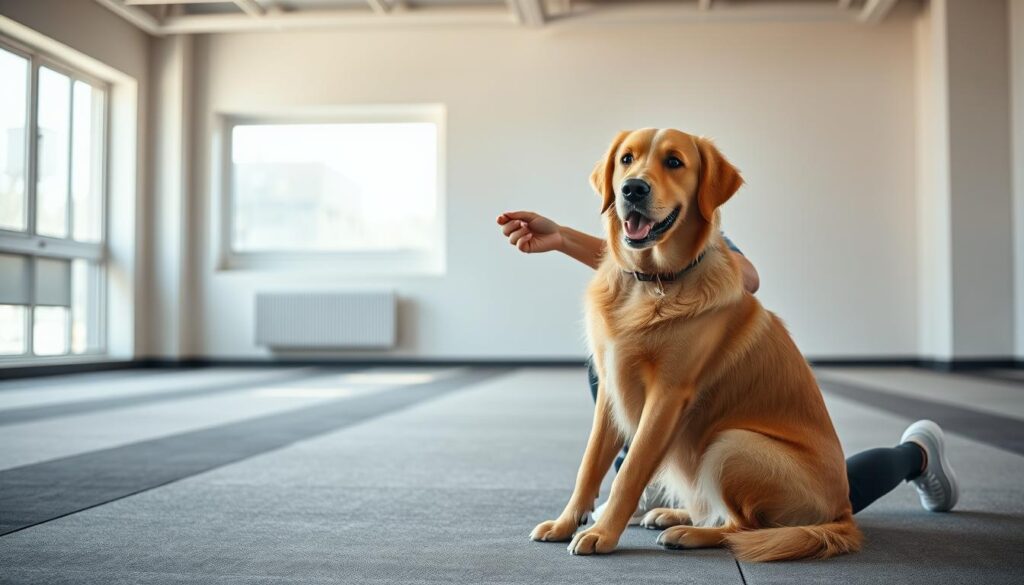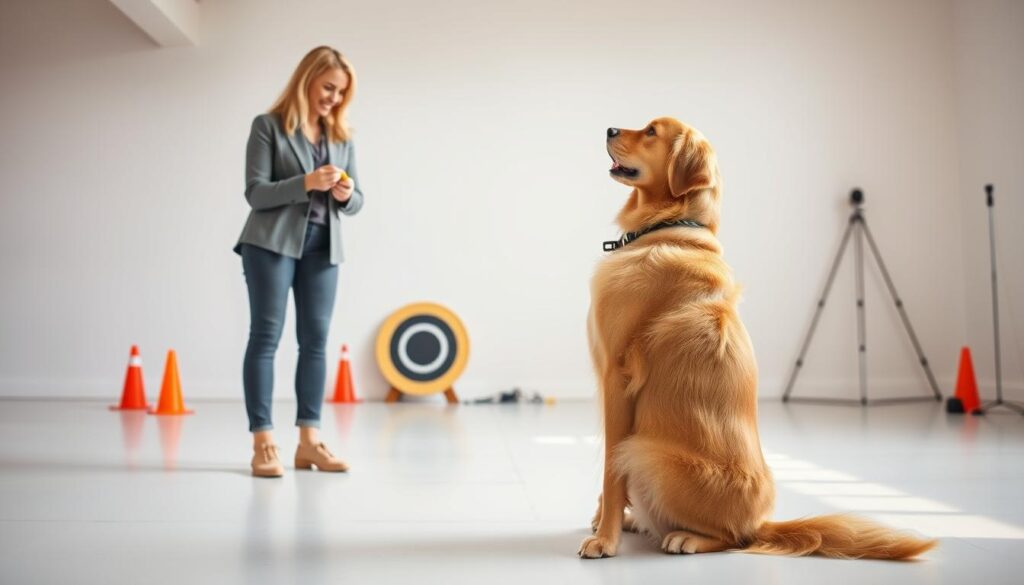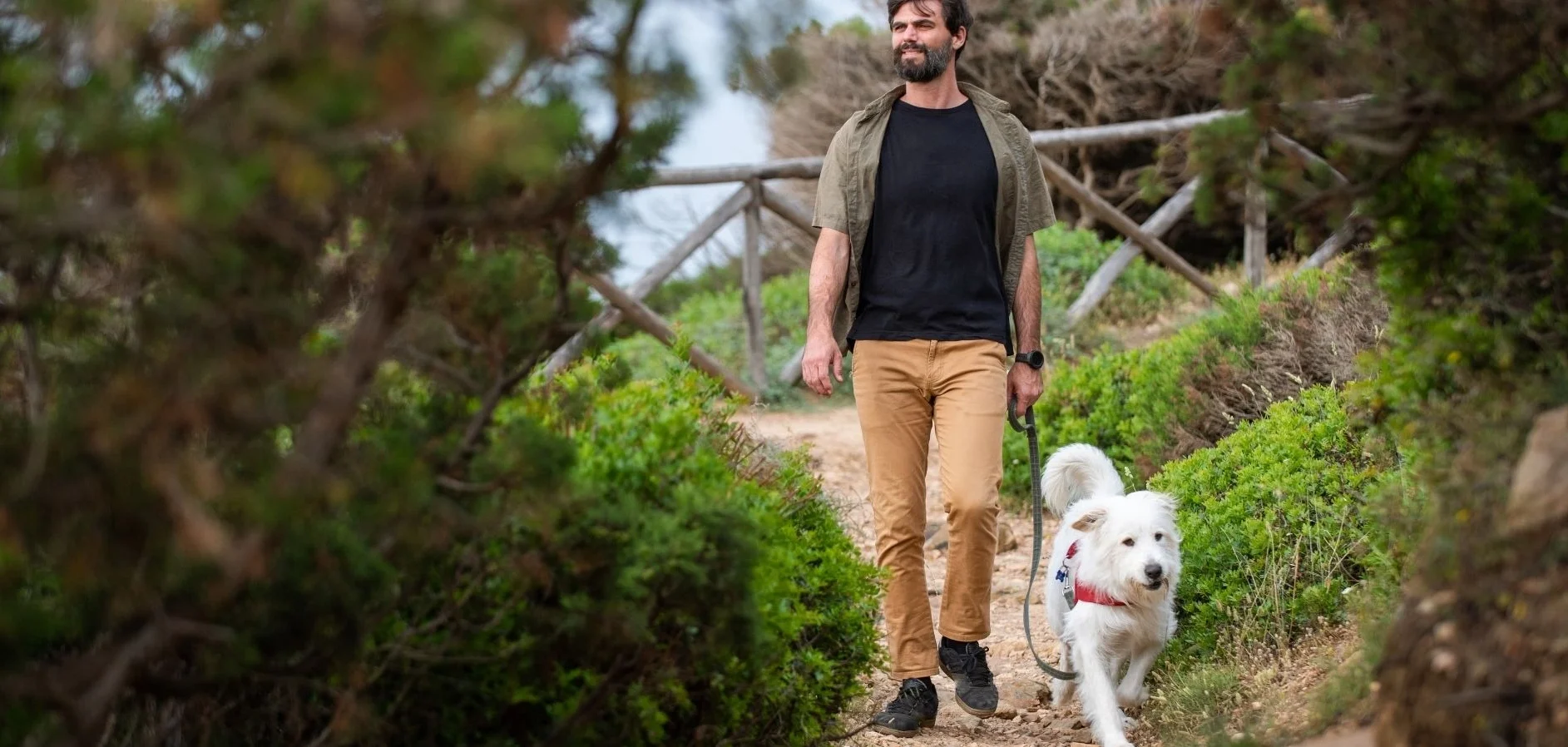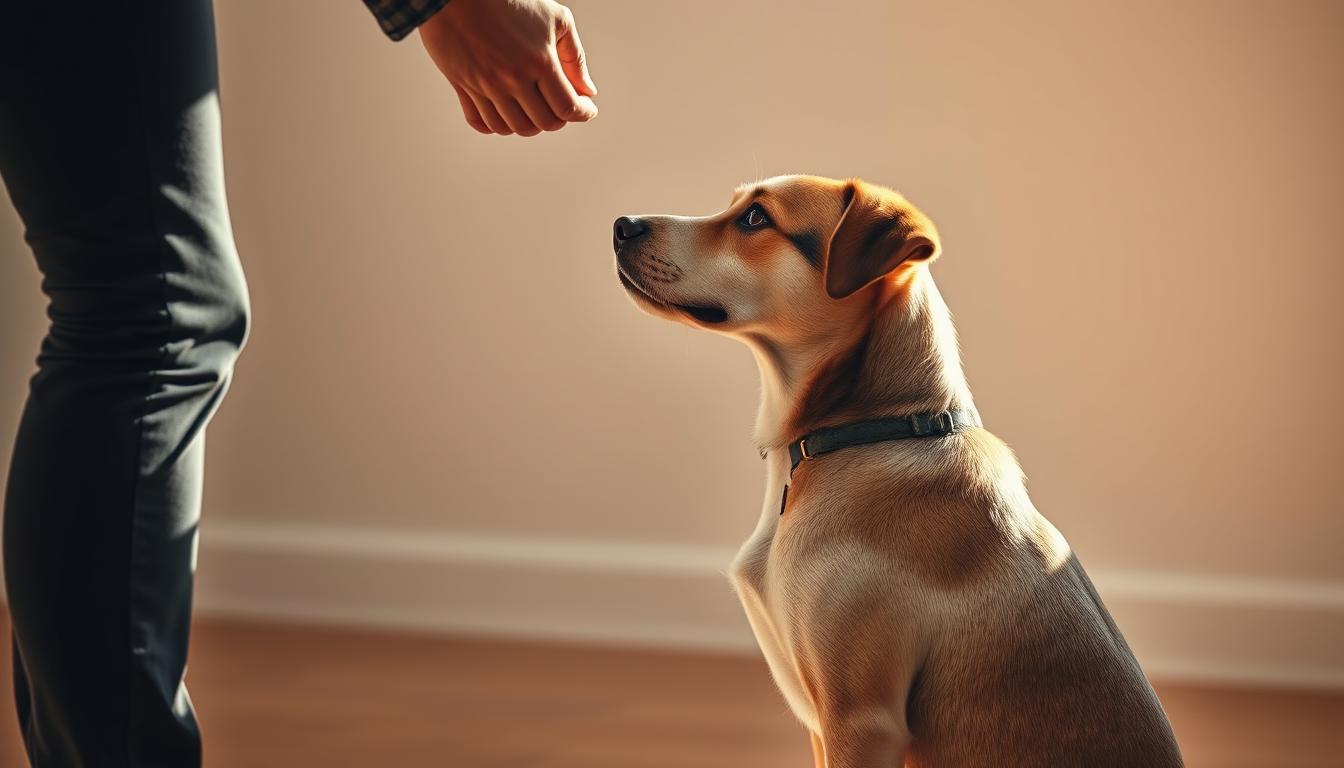Sit Training Made Easy: Step-by-Step Guide with Positive Reinforcement
Table of Contents
Every dog owner has that special moment when their pet learns a new command. Teaching your dog to sit is more than just a skill. It’s about creating a strong bond of trust and understanding.
Dog obedience classes usually start with the “sit” command. This is because it’s a key skill for all future training. Using positive reinforcement makes sit training fun and strengthens your bond with your dog.
Whether you’re new to dog ownership or want to improve your training, learning sit can open up a world of connection with your dog.
Key Takeaways
- Positive reinforcement creates a fun, engaging training environment
- Sit training is crucial for basic dog obedience
- Consistent rewards accelerate learning
- Training builds stronger human-dog relationships
- Patient, gentle approaches yield the best results
Understanding the Power of Positive Reinforcement in Dog Training
Professional dog training focuses on how dogs learn and react to different methods. Positive reinforcement is a key method for changing pet behavior. It builds a strong bond between you and your dog.
Dogs are smart and love clear communication and rewards. The idea of positive reinforcement is simple. It rewards good behavior to make it happen again.
The Science Behind Reward-Based Training
Learning in dogs is based on psychology, making reward-based training very effective. Using treats, praise, or toys to reward good behavior motivates dogs to do it again.
- Builds strong neural connections
- Increases dog’s confidence
- Creates a positive learning environment
How Dogs Learn Through Positive Associations
Your dog’s brain looks for positive experiences. Professional dog training uses this by linking good behavior with fun rewards. This turns training into a fun game for your pet.
Benefits of Force-Free Training Methods
Positive reinforcement in dog training has many benefits:
- Reduces stress and anxiety
- Strengthens the human-dog bond
- Promotes long-lasting behavioral changes
- Builds trust and mutual respect
The most effective training happens when your dog wants to learn, not when they’re forced to comply.
Essential Supplies for Successful Sit Training
Getting ready for dog training needs careful planning and the right tools. Obedience training starts with the right supplies. These make training fun and effective.
Choosing the Right Training Treats
Choosing the right treats is key for dog training. Treats should be small, tasty, and easy to eat.
- Small enough to be consumed quickly
- High in flavor and appeal
- Soft and easy to eat
Good treat options include:
- Small cubes of cooked chicken
- Tiny pieces of cheese
- Commercial training treats designed for quick rewards
Creating an Ideal Training Environment
Your training space is very important. Choose a quiet spot with few distractions. This helps your dog focus on learning.
Optional Training Tools and Equipment
Some tools can make training better:
- Clicker for precise marker training
- Treat pouch for convenient reward delivery
- Non-slip training mat
Pro tip: Keep training sessions short and engaging to maintain your dog’s interest and motivation.
Preparing for Your First Training Session
Getting ready for sit training is all about preparation and the right mindset. It starts with creating a positive learning environment. This environment is key for both you and your dog to succeed.
Before starting your sit training session, consider these important steps:
- Select a quiet, distraction-free area for training
- Gather high-value treats your dog loves
- Wear comfortable clothing that allows easy movement
- Bring a positive and patient attitude
Time management is key in sit training. Aim for sessions that last 15-20 minutes. Dogs can only focus for so long, so keep training fun and engaging.
“Success in dog training comes from consistency, patience, and understanding your dog’s learning style.”
Your mood affects training a lot. Dogs are very sensitive to your energy. So, be excited and calm during training to make it a positive experience.
Professional dog training focuses on making training fun and rewarding. Use treats, stay upbeat, and celebrate small wins. This makes sit training a positive experience for your dog.
Basic Sit Training Techniques for Beginners
Starting dog obedience classes means learning basic training techniques. These help you talk to your dog in a way they understand. Training needs patience, consistency, and the right way to do things. Learning to teach your dog to sit is a great first step.

The Lure and Reward Method
The lure and reward method is a strong way to train dogs. Here’s how to use it:
- Hold a treat close to your dog’s nose
- Slowly move the treat up and back over their head
- Watch as your dog’s head tilts up, naturally lowering their bottom
- Mark the moment they sit with a verbal cue like “sit”
- Immediately reward with the treat and praise
Capture Training Technique
Capture training is another way to teach sit commands. It involves:
- Watching your dog sit naturally
- Marking the action with a verbal cue
- Rewarding right away to make the behavior stick
Using Verbal Cues and Hand Signals
Clear communication is crucial in dog training. Use both verbal cues and hand signals to teach your dog:
| Cue Type | Technique | Tips |
|---|---|---|
| Verbal Cue | Use a clear, short word like “sit” | Speak in a calm, confident tone |
| Hand Signal | Open palm raised upward | Consistent motion helps dog understand |
| Timing | Coordinate verbal and hand signals | Practice synchronization |
Remember, every dog learns differently. Be patient and make training sessions fun and rewarding!
Mastering the Timing of Rewards and Praise
Timing is crucial in pet behavior training. The right moment to give a reward can greatly impact learning. Good canine training programs focus on timing to show dogs what behavior is rewarded.
The key to reward timing is simple: mark and reward the desired behavior within 1-2 seconds. Dogs quickly link their actions to rewards. Waiting too long can confuse them and slow learning.
- Use a clicker or specific marker word to pinpoint the exact moment of correct behavior
- Deliver treats immediately after the desired action
- Ensure your reward is meaningful and exciting for your dog
Experts suggest several ways to improve reward timing:
- Practice your timing with simple commands
- Use high-value treats that motivate your dog
- Keep training sessions short and focused
- Stay consistent with your reward method
Avoid mistakes that can mess up your training. Watch for signs of confusion and adjust your training as needed. Remember, patience and precision are essential for a strong bond with your dog.
Common Challenges in Sit Training
Professional dog training isn’t always easy. Every dog owner faces obstacles during sit training. These challenges can test your patience and skills. Understanding these issues helps you find better strategies and keep training positive.
Sit training needs a consistent approach and knowing your dog’s learning style. Spotting potential problems can turn frustrating moments into chances for growth.
Addressing Jumping and Restlessness
Dogs can get too excited during training, leading to jumping. To handle this:
- Keep treats close to your dog’s nose
- Move treats slowly backward to encourage sitting
- Use calm, steady hand movements
- Reward only when all four paws are on the ground
Maintaining Focus During Training
Keeping your dog’s attention during sit training can be tough. Professional dog training tips include:
- Train in short, 5-10 minute sessions
- Choose quiet environments with minimal distractions
- Use high-value treats as motivation
- Practice in different locations to generalize the skill
Troubleshooting Training Setbacks
If sit training progress slows, stay patient. Some dogs learn in different ways, and setbacks are normal. Go back to basics, adjust your method, and celebrate small wins.
“Consistency and positive reinforcement are key to successful dog training.” – Professional Dog Trainers Association
Advanced Techniques for Reliable Sit Commands
Improving your dog’s sit command needs smart strategies from professional dog training classes. These classes teach how to make your dog respond well in many places.
To make your dog’s sit command strong, focus on a few important steps:
- Gradually reduce food lure dependency
- Introduce hand signals without treats
- Practice sit commands in different locations
- Add increasing levels of distraction
Switching from treats to praise helps your dog see the sit command’s value. Practice makes perfect in dog training. So, keep testing your dog’s skills.
Advanced training includes:
- Using an empty hand signal
- Rewarding from a hidden treat pouch
- Extending sit duration gradually
- Introducing sit commands with increasing difficulty
Being patient and using positive reinforcement is key for a reliable sit command. Professional dog training classes offer the right guidance to learn these advanced methods.
Building Duration and Distance in Sit Training
To improve your dog’s sit command, use special training methods. These methods help your dog learn and perform better. They make your dog a well-trained friend.

As you train more, you’ll need to test your dog’s sit in different situations. This means three important steps to improve their skills:
Progressive Training Steps
First, increase how long your dog sits:
- Start with 2-3 second sits
- Then, try 5-10 second sits
- Next, aim for 30-second sits
- Practice with fewer hand signals
Adding Distractions Gradually
Adding distractions helps your dog stay focused. Here’s how to do it:
- Begin in a quiet place
- Then, add soft sounds
- Move to harder situations
- Always reward good behavior
Proofing the Behavior
The goal is a rock-solid sit command. Train in different places and with distractions. This makes your dog reliable everywhere.
Consistency and patience are key to mastering advanced sit training techniques.
Conclusion
Your journey in sit training is more than just a simple command. It’s a way to communicate better with your dog. Professional dog training shows that being consistent and positive builds trust and understanding.
Sit training is a strong base for learning more. As you keep practicing, you’ll see your dog’s behavior and response get better. The methods you’ve learned will help you teach more advanced skills, making your dog well-behaved and confident.
Patience and persistence are crucial in sit training. Every session is a chance to grow closer and have meaningful moments. With time and effort, your dog will learn to sit reliably, improving your bond.
Don’t stop growing by continuing to train. Look for professional dog training resources or local classes to learn more. Your dedication to training will make your relationship with your dog happier and more harmonious.
There are no reviews yet. Be the first one to write one.


